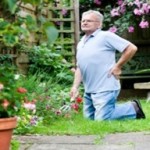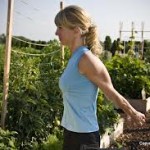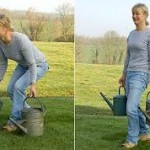A water based exercise programme for hip and back pain by Olivia O Leary D.C BSc Hons
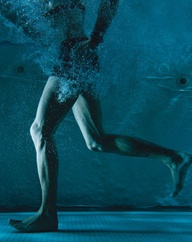
Water based exercise programmes are especially helpful in cases where a land-based exercise program is not possible due to a client’s intensity of pain, severity of condition or other factors. As such, water therapy is a versatile exercise and is particularly good for people with conditions such as:
- Osteoarthritis
- Advanced osteoporosis (with susceptibility to and/or pain from fracture)
- Muscle strain or tears
All of these conditions can make it uncomfortable or painful to exercise on a hard surfaces or while standing. Water is a kinder and more comfortable environment.
If you are any way unsure about the suitability of the following exercises, please feel free to message /ask one of our Gorey Family Chiropractic team where we would be happy to tailor make the water based exercise programme to your own injury recovery requirements.
GUIDELINES FOR GETTING STARTED
Choose a pool that has a different depths. You should be able to workout in waist-deep water and chest-deep water. Make sure also the pool has an area where you can exercise in your own lane, away from swimmers or an open-swim environment.
You may benefit from a water shoe or light water resistant sandal with grip this will allow you to grip the pool floor more easily.
This back/hip -friendly water workout avoids actions like jumping, twisting which may aggravate back pain or hip pain.
Try to complete a water exercise routine 3 times per week to improve back pain or hip pain symptoms in a few weeks to a month. Walk and do light stretching to reduce muscle soreness on the days you do not do water exercise.
WARM UP WITH CARDIO WATER EXERCISES
-
Begin your workout by warming up the muscles with a cardiovascular workout. Start in the area of the pool that has waist-deep water. Begin walking back and forth through the area, while swinging your arms as you would if you were walking on land.
 You will get some resistance when you swing your arms. Although it may not feel as comfortable as walking on land, it is important to focus on creating a swinging motion for proper body mechanics and balance.
You will get some resistance when you swing your arms. Although it may not feel as comfortable as walking on land, it is important to focus on creating a swinging motion for proper body mechanics and balance.
Walk in the water for 5 to 10 minutes. If you feel comfortable with the motion and want an extra challenge, move to chest-deep water after 5 minutes. You will feel an increase in resistance.
A cardiovascular workout treats back pain in a similar way as walking. It stretches and strengthens muscles throughout your back and legs. It can also lead to weight-loss, which can reduce the painful pressure on nerves, discs and muscles.
- Move to deeper water and try to water jog. In this motion, you feet should minimally touch the ground, but you will swing your elbows a bit like runnning on the spot in water..
Focus on each footfall being heel to toe, rather than toe to heel. This will mimic a natural walking or jogging motion, helping you strengthen muscles that you use in daily walking. You will move forward slowly in the water.
Water jog for 5 to 15 minutes depending on your problem and fitness levels and stop when you start to feel muscle fatigue.
If you have access to water weights you can strengthen your arms as you swing them while water jogging.
STRENGTHENING WATER BASED EXERCISES
Stand near the edge of the pool to begin strength-training water exercises. To start place one hand on the edge of the pool. For added stability, place your back against the edge of the pool.
Do leg kicks:
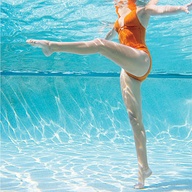
The exercise can be done once confident, away from the pool side with a straight leg.
Keep one leg on the ground the opposite knee can be slightly bent. Contract your stomach muscles and slowly raise the opposite leg as high as it will go. Slowly lower it back down.
This exercise will stretch and strengthen your thighs. Repeat it 12 to 15 times, and then turn around and repeat it with the opposite leg. It is important to be slow and deliberate with your movements so that you do not add to your back pain or hip pain.
Do Water Marching:
You can do this with 1 hand holding onto the wall or away from the wall in waist-high water. Start a walking motion, but bring your knee as high as you can after you lift each leg.
Lower it and do the same marching motion with the opposite leg. Work towards making your thigh parallel with the water’s surface. March for 5 minutes, or until you feel muscle fatigue. This exercise stretches and strengthens your thigh, hip, buttock, abdominal and back muscles helping combat back pain and hip pain.
Do Water Weight Lifting:
- Bend your knees and place your back against the side of the pool. Push gently so that your back feels stable.Grab water weights in each hand. Bend your elbows and keep them straight. You will be moving your forearms during this exercise.
Tighten your tummy muscles. Bring the weights down until your arms are straight. Slowly bring the weights up through the water, until your arms are at a 90 degree angle again. Repeat 12 times and do 2 to 3 sets. Stop if there is pressure on your back or your muscles are fatigued.
This exercise strengthens your arms and your core.Make sure to keep your stomach tight throughout the entire exercise.As your abdominal muscles feel stronger with time, move away from the edge of the pool, bend your knees slightly and keep your back straight as you perform the exercise.
STRETCHING WATER BASED EXERCISES
- Stand with your back to the edge of the pool. Bend your knee and lift it to your chest. Grasp your knee with your hands and hold for 20 seconds.Repeat with the opposite leg. Do the stretch 2 to 3 times on each side. Make sure your back stays straight through this entire exercises.
- Do the Supe
 rman Stretch. With your stomach down in the water, hold on to the edge of the pool. Stretch your legs out as far as they will go and move the legs gently to assist staying afloat. Hold the stretch for 30 seconds and repeat 3 times. This exercise will form a gentle arch in your back, stretching your stomach, back, shoulder and leg muscles.
rman Stretch. With your stomach down in the water, hold on to the edge of the pool. Stretch your legs out as far as they will go and move the legs gently to assist staying afloat. Hold the stretch for 30 seconds and repeat 3 times. This exercise will form a gentle arch in your back, stretching your stomach, back, shoulder and leg muscles.
- Stand with your back near the edge of the pool. Reach both hands backward and grasp the rail at the edge of the pool tightly. Take 1 step forward and move your hands as close together as is possible.You should feel a deep stretch in your chest and upper arms. Hold for 15-30 seconds and repeat 2 to 3 times. Adequately stretching your chest muscles will make it easier to sit and stand up straight without hunching your back. Tight chest muscles cause rounding the shoulders and can contribute to a hunchback type posture.
GOREY FAMILY CHIROPRACTIC: SUPPORTING YOUR RECOVERY AND MAINTAINING IT
Our specialist Chiropractic team are trained and hold extensive experience both in Ireland and the U.K in back pain and hip pain diagnosis, back pain and hip pain treatment and back pain rehabilitation. Equipped with on site x ray and state of the art gait scanning equipment, we consider not only your back pain or hip pain, but the root cause of your problem and will work with you to help maximise your recovery through tailor made treatment and rehabilitation.
For your convenience all of our Gorey Family Chiropractic team are registered with VHI, Glo, Aviva and Laya Healthcare allowing clients claim reimbursement from a wide range of private healthcare Insurance providers. We also provide care under the GAA injury scheme.
Opening hours Mon 8-7, Tues 9-5, Wed 8-7, Thurs 9-5, Frid 8-7
Tel: 053 94 83338 or alternatively email info@chiropractor.ie
 Do you often find your child hunched over an ipad or phone playing downloaded computer games or slouched on the floor watching TV? Poor posture is a common cause of back pain and soreness for children.
Do you often find your child hunched over an ipad or phone playing downloaded computer games or slouched on the floor watching TV? Poor posture is a common cause of back pain and soreness for children. Set up this area so kids are seated to allow eye level or slightly below eye level viewing of the screen. Also, adjust the chair so the height allows for both feet to be firmly planted on the floor.
Set up this area so kids are seated to allow eye level or slightly below eye level viewing of the screen. Also, adjust the chair so the height allows for both feet to be firmly planted on the floor. s to work muscles and improve posture even while children are in front of their screens. Rehab balls, for example, offer a dynamic surface that makes children work their trunk muscles (pectoralis, obliques and abdominis) while they are playing video games. This helps promote proper posture and strengthen the core.
s to work muscles and improve posture even while children are in front of their screens. Rehab balls, for example, offer a dynamic surface that makes children work their trunk muscles (pectoralis, obliques and abdominis) while they are playing video games. This helps promote proper posture and strengthen the core.